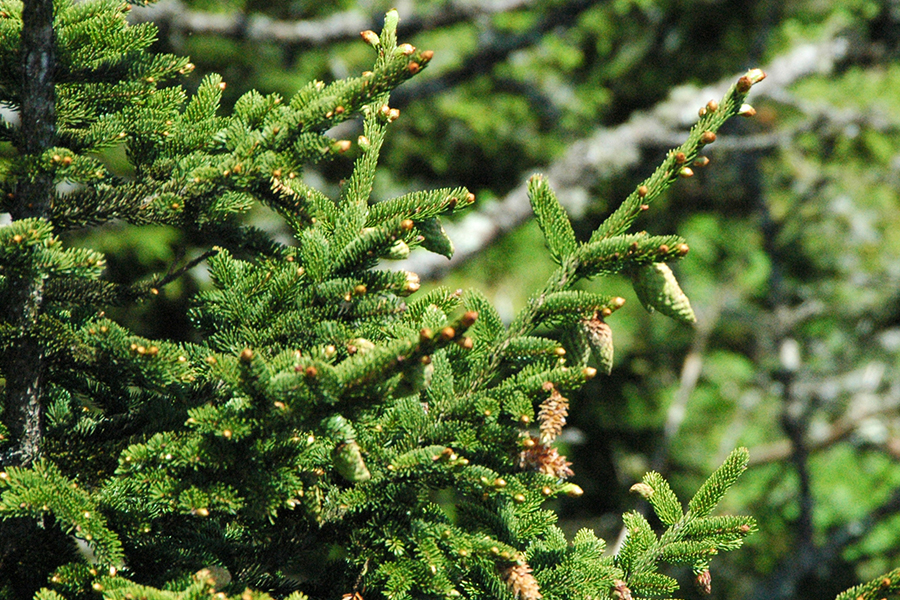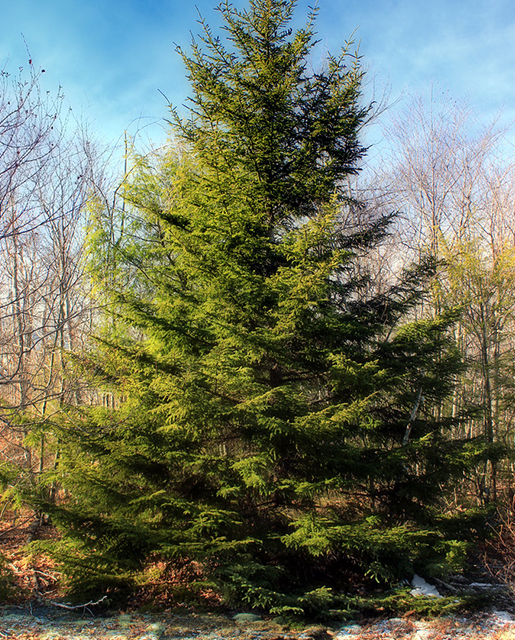Picea rubens
Red spruce is an evergreen tree native to the northeastern United States and southeastern Canada. One of the most commercially important trees in the northeast, red spruce is used for construction, carpentry, and Christmas trees.
Location
See if you can spot the Hadwen Arboretum’s only red spruce off the East-West Trail as it runs along Lovell Street.


History at Hadwen
There is no record of Hadwen planting red spruce in the arboretum and they do not appear in surveys until 2020. However, Hadwen greatly appreciated conifers “for their symmetry of form and varying shades of everlasting green, and the beauty and grandeur of individual trees are enlisting increasing attention.”
Keep Learning
Detailed Species Information
Red spruce, also known as Eastern spruce or yellow spruce, is an evergreen coniferous tree native to the eastern United States, southeastern Canada, and high elevations of the Appalachian Mountains south of New York state. This large and long-lived tree often reaches 60–80 feet (18–24 meters) in height. The tree has a narrow, conical form and roughly plated gray bark with a reddish-brown color revealed beneath the plates. The leaves of the red spruce are yellowish-green needles about half an inch (13 millimeters) in length. The cones hang down from branches and mature in early fall with hard, rounded scales.
Red spruce is a shade-tolerant and slow-growing species often found in late-succession forests. Establishing in the shady understories of forests, the red spruce can live for hundreds of years until it becomes part of the overstory. It prefers well-drained but moist soils and is often found at high elevations. It provides food and shelter for many species of birds and mammals. Red spruce is a commercially important tree in the northeastern United States. Its wood is light, soft, and commonly used for construction, carpentry, paper pulp, and musical instruments. The red spruce is also commonly used for Christmas trees. In landscaping, red spruce is rarely planted, although in the right climate, it could make a fine specimen planting in a park or garden.
